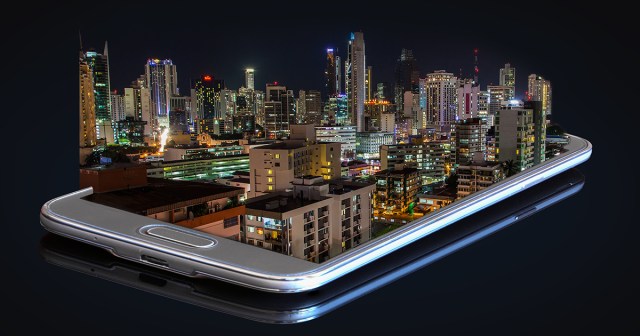
TL;DR
- With the next generation of mobile technology always on the horizon, the telecom industry made moves last year to prepare for the arrival of 6G.
- While 6G isn’t expected to hit the commercial market until roughly 2030, the race to get there has already been marked with billions of dollars in investments
- There is a widening split along US-China lines that threatens international collaboration to set standards for 6G, worrying some analysts that the West will ultimately lose any East-West tech war
It may only be five years before the telecom industry ushers in the successor generation to 5G, but whether 6G ends up being a transformational technology, just an upgrade on 5G or even a thing – remains to a mystery.
According to Light Reading, which has been tracking developments, the industry is still trying to justify the investment in and hype around 5G, which has arguably found a more successful use case in fixed wireless access (FWA) than mobile so far, driven in part by the rush to home broadband during the COVID-19 pandemic.
There are also doubts creeping in among governments and the investment community about whether another ‘G’ is worth it. The arrival of a new mobile standard every decade or so is meant to be a stimulant to investment and to galvanize consumers to upgrade but fatigue may be setting in.
“The 5G experience has been a long-overdue wake-up call,” writes Iain Morris, LR’s International Editor. “It began with the usual publicity frenzy about new revenue-generating service opportunities (remember self-driving cars and robot surgeons?), few of which have materialized.
“Politicians joined in, telling voters 5G was an economic game-changer. Somewhere in this process, the realization struck that 5G was basically 4G on caffeine – a bit faster, a bit more cost-efficient, but (despite all the money spent) no great cause for excitement.”
Geopolitics is huge worry. Efforts to cut Huawei off from Western supply chains risk a fragmentation of the global standard, meaning there would not be a 6G but multiple 5G successors. China has responded by all but cutting out Ericsson and Nokia in the country.
Börje Ekholm, Ericsson’s CEO, admitted concern during an interview last year. “If the tech world is fragmented East and West then it is going to mean competition between two ecosystems,” he told Light Reading.
At the beginning of 2022, a Chinese research team achieved a breakthrough with an impressive peak wireless speed of 206 Gbit/s in the Terahertz band, expected to be one of the core spectrum bands for 6G.
The little-known Zijinshan Laboratory in Nanjing ran the test, backed by China Mobile and several other labs. “This only goes to remind us that the once obscure world of wireless lab trials is now a big deal in China,” says Light Reading contributing editor Robert Clark.
“6G is one of the half a dozen strategic technologies in which China has declared its ambitions to be a, if not the, world leader.”
China later condemned the US for forming “a small clique of allies in a frantic attempt to exclude and suppress China” from 6G development.
Specifically, it called out the Next G Alliance, the grouping of US carriers and big vendors including Qualcomm, Ericsson and Samsung. In March, the Alliance released a white paper that laid out its goals for the development of 6G.
“This is how we will define leadership in North America,” explained Susan Miller, CEO of ATIS, the trade association backing the effort in a Light Reading editorial. “The intent is to develop that leadership.”
The paper presents six “audacious” goals covering future global standards, deployments, products, operations and services in 6G. The alliance is attempting to address the development of the technology early, not only from a technological point of view but also from a regulatory, societal, environmental and geopolitical perspective.
But global standards body the ITU met last June in what is increasingly seen as a vain hope to benchmark a new international standard. Instead the tensions between China, has given weight to the concept of the splinternet – exacerbated by Russia’s invasion of Ukraine – wherein core tenets of a shared and interoperable Internet are no longer available around the world. Indeed, some major names in the US financial sector are already planning for a future that is trending away from globalization rather than toward it.
None of this is stopping companies from pouring billions into 6G investment in the hope that their patents will become part of a 6G standard. According to Mike Dano, European, American and Chinese companies are working furiously to patent technologies that could find their way into a 6G standard.
“Yes, there are 6G patents that have been issued and many more are pending in patent offices around the world,” Ed Fish, co-founder and managing director of patent-monitoring firm Tech+IP Capital, wrote in response to questions from Light Reading. “Some articles have spoken about Chinese companies having 35-40% of the 6G patents, but this is still very early days.”
Interestingly, some analysts suggest China should make a play for Korea as a partner (in 6G and other technologies) by slashing entry barriers for Korean business and investors and forming various kinds of collaborations. South Korea ‘won’ the race to 5G and is intent on launching 6G perhaps as early as 2028.
Japan also aims to lead the 6G race. In June, Japanese telco NTT Docomo announced 6G trials with Nokia and local vendors NEC and Fujitsu – the first such announcement by a major telco. NTT said it would begin indoor trials before March 2023 and outdoor trials over the following year.
“If they did fall behind China technologically, the countries buying the West’s less capable 6G might also fall behind economically,” says Iain Morris. “Selling products and services to countries that feel no loyalty toward either China or the US would be harder. Parts of Africa and Latin America would be major battlegrounds. But before any of that, the industry should probably work out if 6G is worth bothering with at all.”
Predicted use cases for 6G include sensing, deep learning and digital twinning technologies that will enable autonomous driving, robotics and the industrial metaverse, among other possibilities, according to industry experts.
‘Sensing’ is the idea of a haptics or multisensory interface with the internet and includes visions of brain-computer interfaces. Ericsson and the University of Surrey have notions of providing connectivity for the senses of taste, touch and smell.
“Whether far-fetched or realistic, much of this strays outside the boundaries of telecom,” says Light Reading in its wrap on the topic in December. “The industry struggles to imagine how networks can be improved other than by speeding them up, adding capacity, cutting latency, boosting energy efficiency and making them more autonomous – all of which is happening, to some degree, in 5G.
“It probably goes without saying that 6G will incorporate more virtualization and openness than 5G, allowing operators to run their radio systems in the cloud and build true multivendor networks. Operationally important? Possibly. A game-changer? Most certainly not.”



